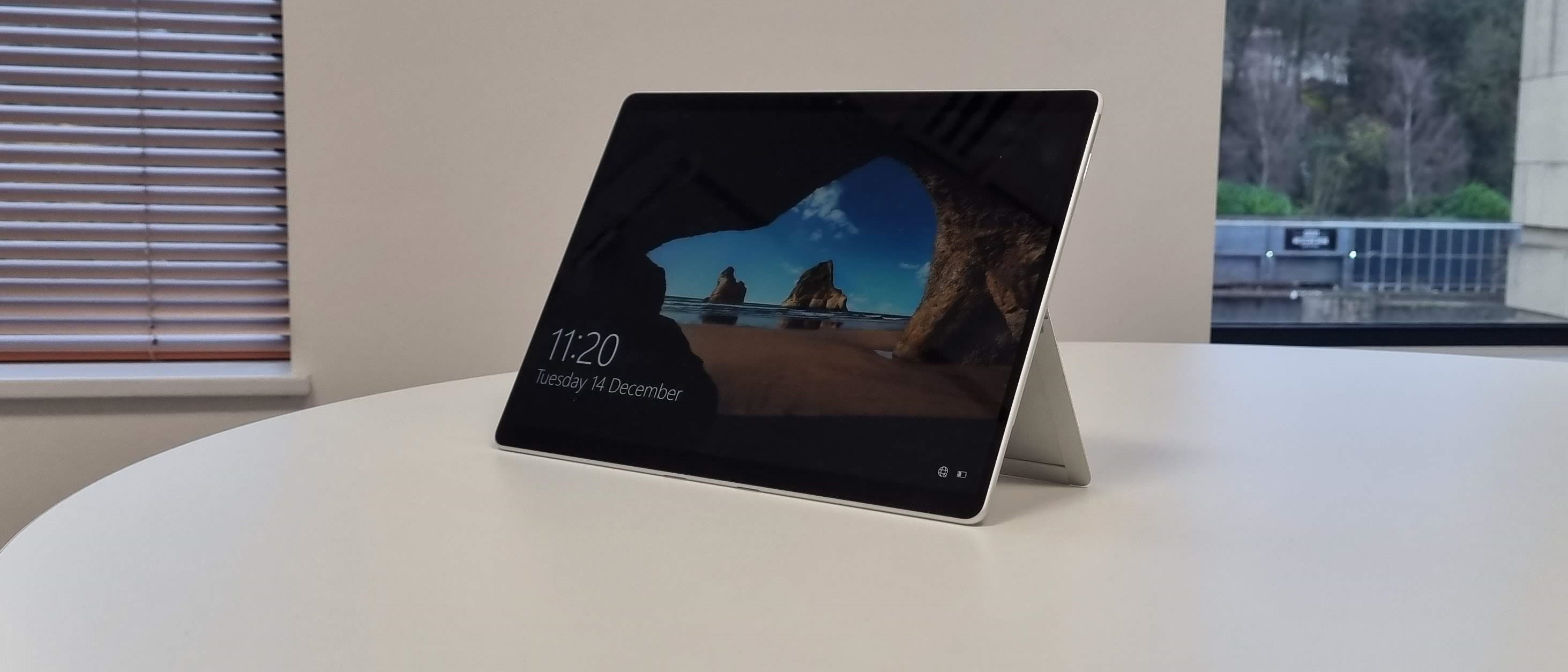Our Verdict
The Surface Pro 8 is an excellent tablet that comes with Windows 11. Digital creatives will love the power on offer here in a tablet form factor, but you’ll need to spend extra for a stylus. If you want a capable tablet but don’t want to switch to iOS or Android, the Surface Pro 8 is a great choice.
For
- Great performance
- Big display
- Stylish design
- Improved battery
Against
- Need to pay for stylus
- No standard USB
Why you can trust Creative Bloq
The Surface Pro 8 is the latest Windows tablet from Microsoft. As with previous Surface Pro devices, Microsoft has made a stylishly designed device that acts as a showcase for its software – namely the recently released Windows 11. This means that unlike iPads or Android tablets which run mobile operating systems, the Surface Pro 8 isn’t limited to mobile apps. So, you can run full Windows apps such as Adobe Photoshop, while still benefitting from the slim and light tablet form.
This makes it great for digital creatives who want something to do their creative work on while out and about. The Surface Pro 8 is much thinner and lighter than traditional laptops, but it’s just as capable. There are also hybrid options like the Surface Laptop Studio, but the price point goes up quite steeply compared to the Surface Pro 8.
Size: 11.3 x 8.2 x 0.37 in (287 x 208 x 9.3mm W x D x H)
Weight: 1.96 pounds (891g)
Processor: 3.0GHz Intel Core i7-1185G7
Resolution: 2,880 x 1,920
Screen: 13-inch QHD touchscreen
Storage: 256GB SSD (PCIe, NVMe, M.2)
Battery: Up to 16 hours
The Surface Pro 8 comes at just the right time for Microsoft as well. Not only has the company just released Windows 11, but in recent years the Surface Pro lineup has felt a little staid. They’ve remained fine devices, but recent releases, such as the 7+, felt like iterative updates rather than anything revolutionary.
So, the Surface Pro 8 comes at a time when Microsoft needs to show the world that it can still make desirable hardware. Does it succeed? Read on to find out…
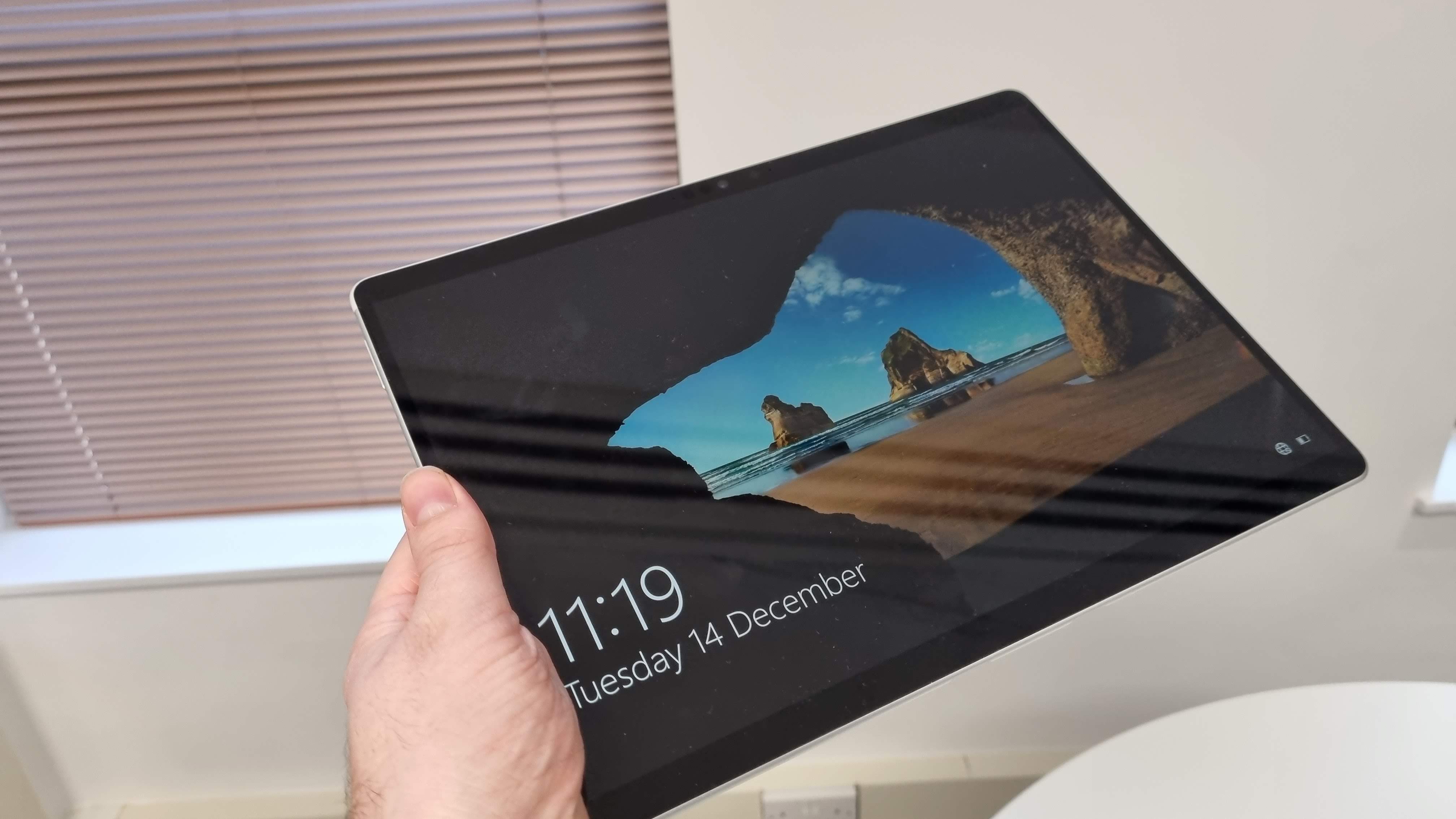
Surface Pro 8: display
As a tablet geared towards creative professionals, the display of the Surface Pro 8 is incredibly important. The good news is that Microsoft has made some choice changes compared to its predecessor. It comes with a 13-inch PixelSense display with a resolution of 2,880 x 1,920, and at this screen size, that leads to a fantastic looking display with pin-sharp details.
It’s a larger, higher resolution display than the Surface Pro 7, making it an even better option for creatives who like working with larger screen devices.
On some models you can now up the refresh rate from 60Hz to 120Hz. This results in a much smoother experience when watching movies or scrolling through websites. Crucially, it makes using a stylus for doodling even more responsive. By default this option is turned off to preserve battery life, but we recommend you use it.
Daily design news, reviews, how-tos and more, as picked by the editors.
It also supports Dolby Vision and will now automatically adjust the colour temperature of the display depending on the light conditions you use the Surface Pro 8 in, similar to how True Tone works on iPads and MacBooks. While the screen can’t compete with the mini LED marvel found in the iPad Pro, it’s certainly the best screen to ever grace a Surface Pro.
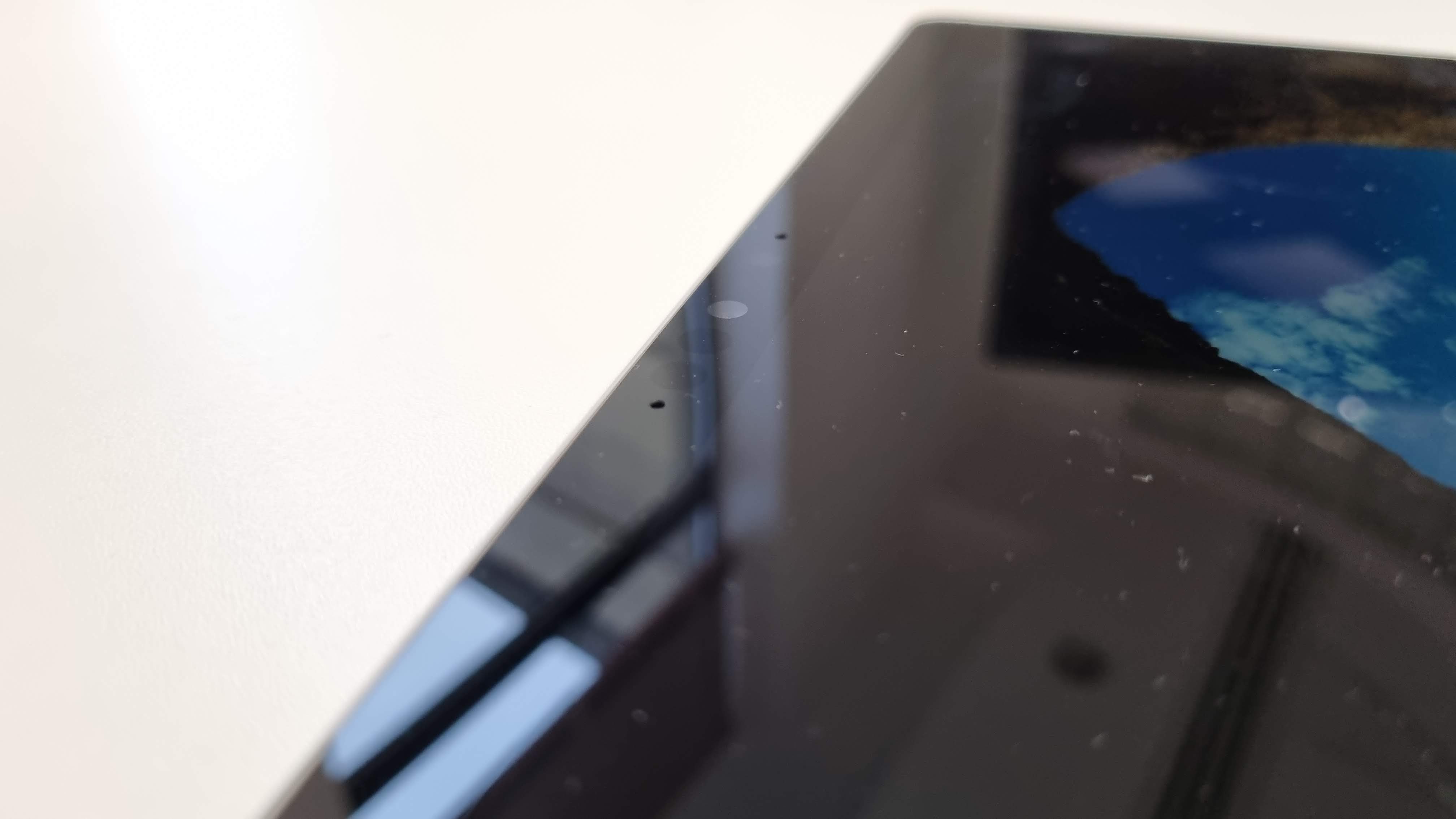
Surface Pro 8: price
The Surface Pro 8 is a flagship product with a price to match. The most ‘affordable’ entry isn’t really all that affordable at all, starting at £999. That’s a big leap over the £799 that the Surface Pro 7 launched at, and while the specs are certainly better (you get an Intel Core i5-1135G7 processor, 8GB of RAM and a 128GB SSD with this model), it’s still going to price a lot of people out of ever getting one.
It’s about the same price as the powerful 12.9-inch iPad Pro, and there are a lot more affordable tablets out there. This means Microsoft really needs to work hard to justify this high price to people. As with previous Surface Pro models, you can configure the Surface Pro 8 with more powerful components, turning an already-powerful tablet into a seriously accomplished mobile workstation. Be warned though: the price climbs even higher once you start packing it with more powerful hardware.
It’s also worth pointing out that despite its high price tag, Microsoft continues to not include a Type Cover (which protects the screen and can be used as a keyboard and touchpad) or Surface Pen stylus. If you want either of those, and we recommend you do get them, that’ll cost you an extra £159.99 and £119.99 respectively. This makes an already expensive purchase even more pricey.
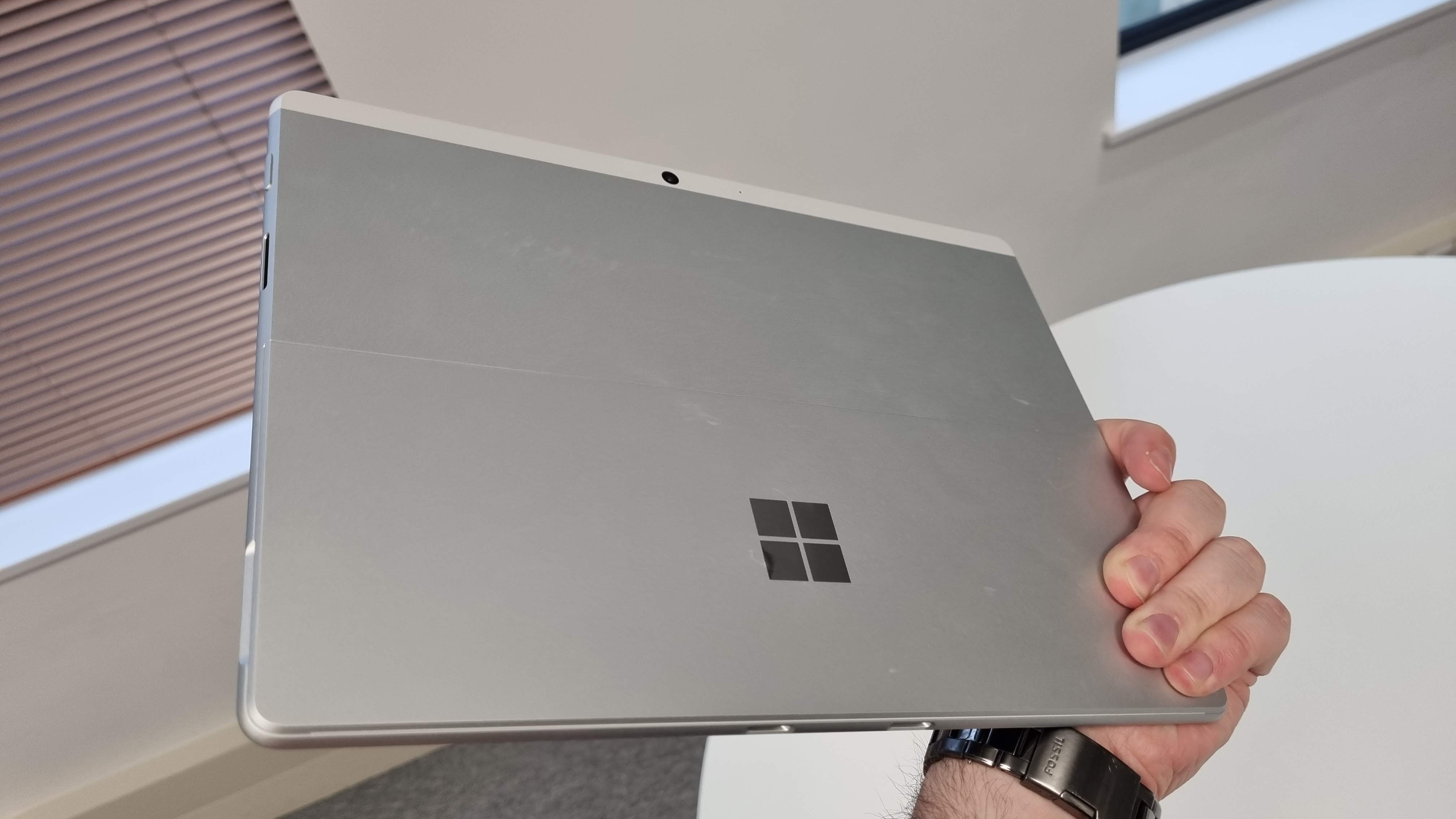
Surface Pro 8: power and performance
The screen isn’t the only area that has been improved for the Surface Pro 8. It now comes with powerful 11th generation Intel Core processors which offer improved performance over the previous generation found in the Surface Pro 7 without making the Pro 8 too hot or impact the battery. With a choice of up to 32GB of RAM, this is a device that can handle pretty much any application you can throw at it. As you’d expect, Windows 11 runs really well, as do the photo and video editing apps we tried out, such as Photoshop and Premiere Pro. Being able to run these demanding apps on a tablet device continues to be impressive – but we do recommend you use the Type Cover (or other keyboard) and plug in a mouse, as these are desktop applications, so not made for touchscreen only-inputs.
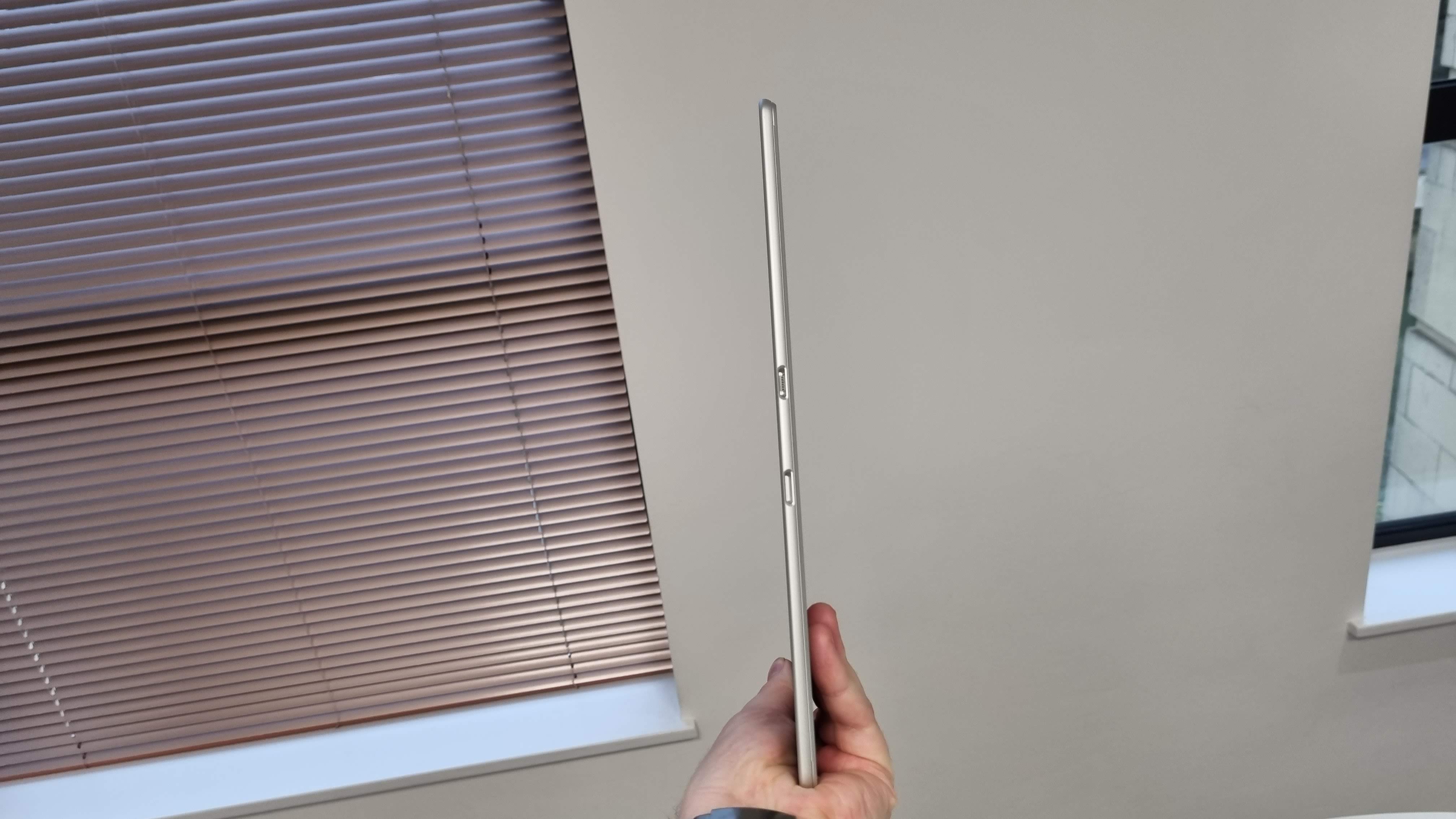
There’s no dedicated graphics card, perhaps understandably considering this is a thin and light tablet device. However, that means that graphics-intensive workloads may suffer. Still, the integrated graphics of Intel’s 11th generation CPUs are pretty good, with Microsoft promising 74% better graphics performance than the Surface Pro 7. For digital art and photo editing, as well as working with up to 4K video footage, this will do the job nicely. For complex 3D animations and game design, you may need to look elsewhere.
The Surface Pro 8 also comes with two Thunderbolt 4 ports which can be used to transfer lots of files quickly to compatible external hard drives, and can also power up to two 4K displays at 60Hz, or one 8K monitor at 30Hz.
Battery life has also been greatly improved thank to a combination of the Surface Pro 8’s new design and more efficient hardware. Microsoft promises up to 16 hours, which will get you through a work day, and in our own tests we found we could get over eight hours of medium to heavy use, including photo editing and video calling. The previous model was barely half of that, so these improvements are very welcome.
Overall, the power of the Surface Pro 8 will impress most creatives, offering a level of performance that many other tablets simply cannot match, and it goes some way to justifying the high price tag.
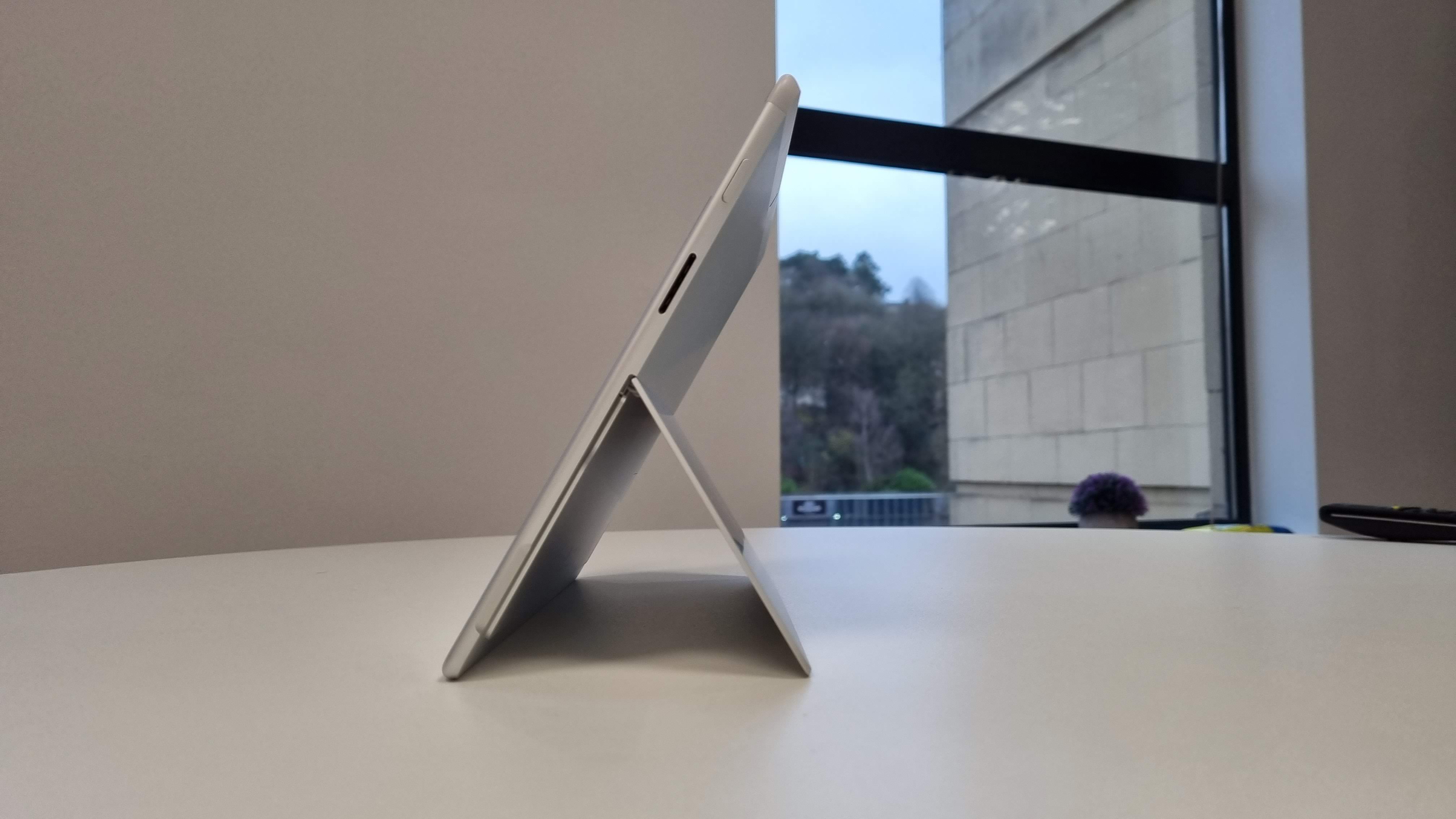
Surface Pro 8: design
The design of the Surface Pro 8 has had a welcome refresh, with an eye catching new graphite colour, and more rounded corners that make it more comfortable to hold.
The bezels around the screen have been slimmed down, and this allows for a larger display to be included without impacting the overall size and weight of the Surface Pro 8 too much. This is still a tablet you can comfortably hold and carry around with you.
As we mentioned earlier, the ports have been updated to Thunderbolt 4. If you have new USB-C peripherals then this is great, but the Surface Pro 8 drops the standard USB port, so if you have older USB devices, you’ll need an adaptor.
The Thunderbolt 4 ports also allow you to use an external GPU to up the graphical performance of the Surface Pro 8, but this will be a rather niche use case for the tablet, as it minimises its portability.
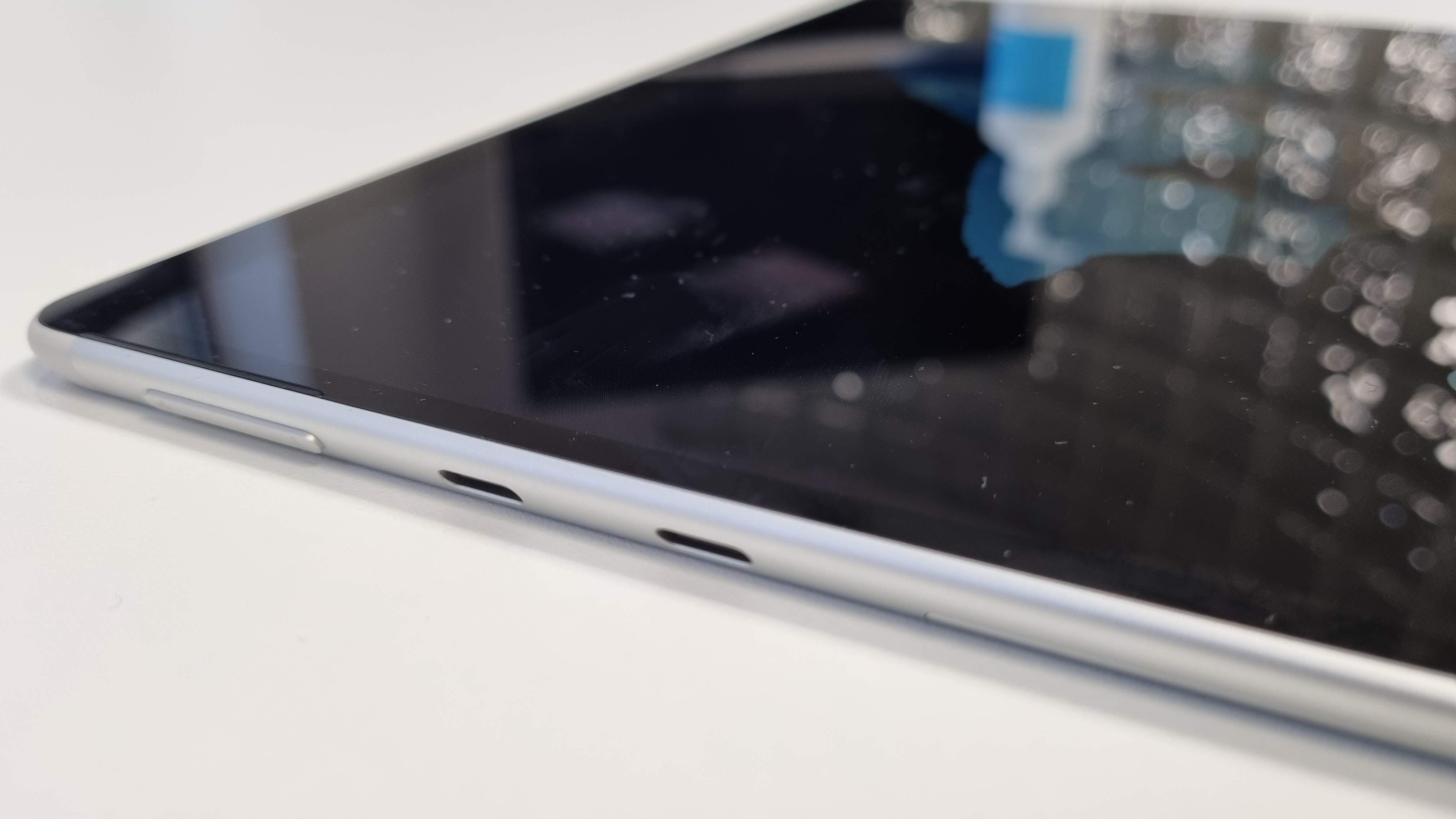
Surface Pro 8: should you buy it?
The Surface Pro 8 is easily the best Surface Pro Microsoft has ever made… but it’s also the most expensive. While it has a fantastic screen and a much improved design, along with powerful Intel 11th generation innards, it won’t quite justify the price tag.
If you have the budget, and want a powerful tablet for doing creative work on, the Surface Pro 8 is going to be tempting. However, there’s also the new iPad Pro, which offers better performance and a much better screen for a similar price.
However, the iPad Pro is still stuck with using mobile apps. The Surface Pro 8 can run full Windows 11 programs, and that could be a decisive factor in what you buy. Want to run the desktop version of Photoshop on a tablet? The Surface Pro 8 is for you.
However, if you don’t need this kind of power in a tablet form factor, there are far more affordable tablets out there. We’re not just talking cheap Android tablets, but iPads and even Windows tablets as well that are almost half the price.
Or, if you’re not convinced by using a tablet, there are some great laptops out there that will offer a similar level of performance, but again for a lot less money.
Related articles:
- The best Surface Pro 8 prices: all the best deals right now
- Microsoft Surface Pro 7 review
- Get the best external hard drives here
out of 10
The Surface Pro 8 is an excellent tablet that comes with Windows 11. Digital creatives will love the power on offer here in a tablet form factor, but you’ll need to spend extra for a stylus. If you want a capable tablet but don’t want to switch to iOS or Android, the Surface Pro 8 is a great choice.

Matt has been a technology journalist for over 15 years, writing for publications such as T3, MacFormat and Creative Bloq. He's a managing editor of TechRadar, Creative Bloq's sister site, where he can be found writing about and reviewing laptops, computers, monitors and more. He often writes for Creative Bloq, helping creatives find their perfect laptop or PC.
